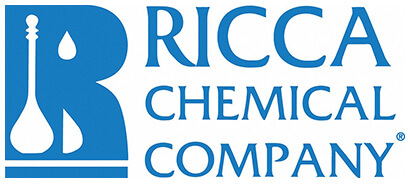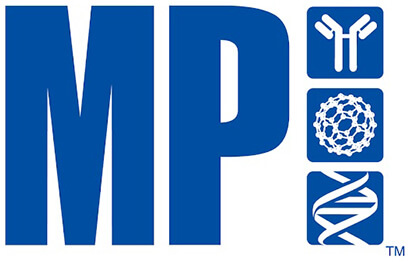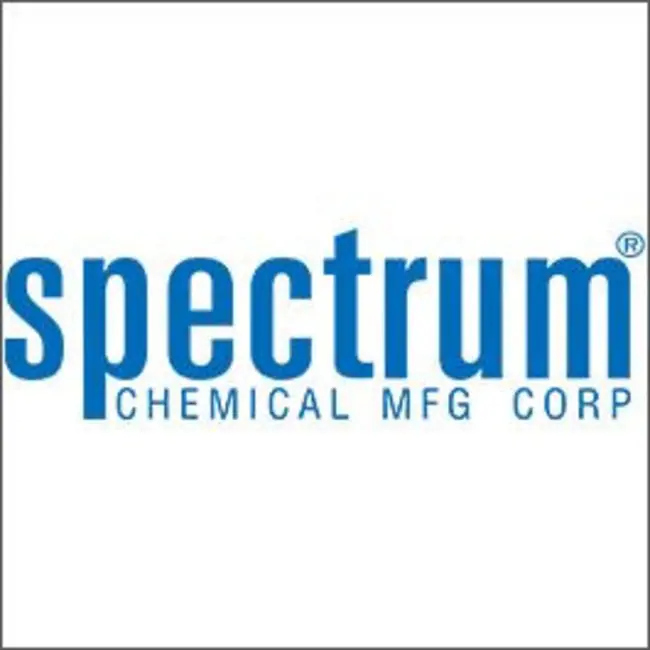Ambient
Showing 60901–60950 of 146505 results
-
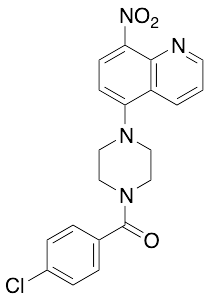
B2
$791.78 Add to cart View Product DetailsMolecular Formula : C20H17ClN4O3
-
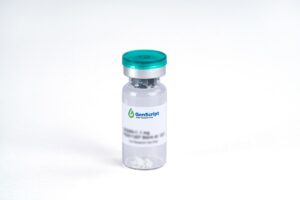
B7-1(CD80) Fc Chimera, Human
$1,035.00 Add to cart View Product DetailsB7-1/CD80 and B7-2/CD86, together with their receptors CD28 and CTLA-4, constitute one of the dominant co-stimulatory pathways that regulate T- and B-cell responses. Although both CTLA-4 and CD28 can bind to the same ligands, CTLA-4 binds to B7-1 and B7-2 with a 20-100 fold higher affinity than CD28 and is involved in the down-regulation of the immune response. Mature human B7-1 consists of a 208 amino acid extracellular domain (ECD) with two immunoglobulin-like domains, a 21 amino acid transmembrane domain, and a 25 amino acid cytoplasmic domain. Both human and mouse B7-1 and B7-2 can bind to either human or mouse CD28 and sCTLA-4. B7-1 is expressed on activated B cells, activated T cells, and macrophages. B7-2 is constitutively expressed on interdigitating dendritic cells, Langerhans cells, peripheral blood dendritic cells, memory B cells, and germinal center B cells.
-
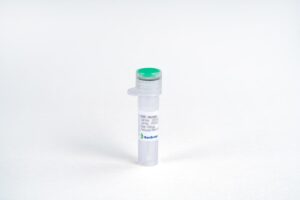
B7-1(CD80) Fc Chimera, Human
$237.19 Add to cart View Product DetailsB7-1/CD80 and B7-2/CD86, together with their receptors CD28 and CTLA-4, constitute one of the dominant co-stimulatory pathways that regulate T- and B-cell responses. Although both CTLA-4 and CD28 can bind to the same ligands, CTLA-4 binds to B7-1 and B7-2 with a 20-100 fold higher affinity than CD28 and is involved in the down-regulation of the immune response. Mature human B7-1 consists of a 208 amino acid extracellular domain (ECD) with two immunoglobulin-like domains, a 21 amino acid transmembrane domain, and a 25 amino acid cytoplasmic domain. Both human and mouse B7-1 and B7-2 can bind to either human or mouse CD28 and sCTLA-4. B7-1 is expressed on activated B cells, activated T cells, and macrophages. B7-2 is constitutively expressed on interdigitating dendritic cells, Langerhans cells, peripheral blood dendritic cells, memory B cells, and germinal center B cells.
-

B7-1(CD80) Fc Chimera, Human
$137.14 Add to cart View Product DetailsB7-1/CD80 and B7-2/CD86, together with their receptors CD28 and CTLA-4, constitute one of the dominant co-stimulatory pathways that regulate T- and B-cell responses. Although both CTLA-4 and CD28 can bind to the same ligands, CTLA-4 binds to B7-1 and B7-2 with a 20-100 fold higher affinity than CD28 and is involved in the down-regulation of the immune response. Mature human B7-1 consists of a 208 amino acid extracellular domain (ECD) with two immunoglobulin-like domains, a 21 amino acid transmembrane domain, and a 25 amino acid cytoplasmic domain. Both human and mouse B7-1 and B7-2 can bind to either human or mouse CD28 and sCTLA-4. B7-1 is expressed on activated B cells, activated T cells, and macrophages. B7-2 is constitutively expressed on interdigitating dendritic cells, Langerhans cells, peripheral blood dendritic cells, memory B cells, and germinal center B cells.
-
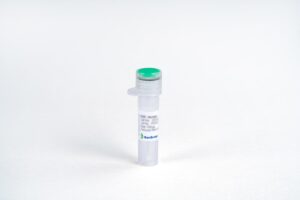
B7-2/CD86 Fc Chimera, Human
$1,035.00 Add to cart View Product DetailsB7-1 and B7-2 are homologous costimulatory ligands expressed on the surface of antigen presenting cells (APCs), both are type 1 transmembrane proteins with a membrane distal IgV and a membrane proximal IgC domain. They share ~25% sequence homology and interact with the same receptors, CD28 and CTLA-4.Binding of these molecules to the T cell costimulatory receptors, CD28 and CTLA-4, is essential for the activation and regulation of T cell immunity. T cell activation requires engagement of the T cell receptor (TCR) with the peptide–MHC complex presented on the cell surface of antigen presenting cells (APCs). In addition to this antigen-specific interaction, a second interaction involving costimulatory receptors (CD28, ICOS) on T cells and their respective ligands (B7-1/B7-2, ICOS-L) on APCs is required for optimal T cell activation. B7-1 and B7-2 may also function to deliver signal into dendritic cells. While B7-1 favors binding to CTLA-4, B7-2 shows a preference for CD28.
-

B7-2/CD86 Fc Chimera, Human
$215.63 Add to cart View Product DetailsB7-1 and B7-2 are homologous costimulatory ligands expressed on the surface of antigen presenting cells (APCs), both are type 1 transmembrane proteins with a membrane distal IgV and a membrane proximal IgC domain. They share ~25% sequence homology and interact with the same receptors, CD28 and CTLA-4.Binding of these molecules to the T cell costimulatory receptors, CD28 and CTLA-4, is essential for the activation and regulation of T cell immunity. T cell activation requires engagement of the T cell receptor (TCR) with the peptide–MHC complex presented on the cell surface of antigen presenting cells (APCs). In addition to this antigen-specific interaction, a second interaction involving costimulatory receptors (CD28, ICOS) on T cells and their respective ligands (B7-1/B7-2, ICOS-L) on APCs is required for optimal T cell activation. B7-1 and B7-2 may also function to deliver signal into dendritic cells. While B7-1 favors binding to CTLA-4, B7-2 shows a preference for CD28.
-

B7-H3 Fc Chimera, Human
$1,035.00 Add to cart View Product DetailsHuman B7 homolog 3 (B7-H3), a member of the immunoglobulin superfamily, is also known CD276, which contains two Ig-like C2-type (immunoglobulin-like) domains and two Ig-like V-type (immunoglobulin-like) domains. B7-H3 may participate in the regulation of T-cell-mediated immune response. B7-H3 also plays a protective role in tumor cells by inhibiting natural-killer mediated cell lysis as well as a role of marker for detection of neuroblastoma cells. Furthermore, B7-H3 is involved in the development of acute and chronic transplant rejection and in the regulation of lymphocytic activity at mucosal surfaces. Human B7-H3 does not bind any known members of the CD28 family of immunoreceptor. However, B7-H3 has been shown to bind an unidentified counter-receptor on activated T cells to co-stimulate the proliferation of CD4+ or CD8+ T cells. B7-H3 has also been found to enhance the induction of primary cytotoxic T lymphocytes and stimulate IFN-gamma production.
-

B7-H3 Fc Chimera, Human
$237.19 Add to cart View Product DetailsHuman B7 homolog 3 (B7-H3), a member of the immunoglobulin superfamily, is also known CD276, which contains two Ig-like C2-type (immunoglobulin-like) domains and two Ig-like V-type (immunoglobulin-like) domains. B7-H3 may participate in the regulation of T-cell-mediated immune response. B7-H3 also plays a protective role in tumor cells by inhibiting natural-killer mediated cell lysis as well as a role of marker for detection of neuroblastoma cells. Furthermore, B7-H3 is involved in the development of acute and chronic transplant rejection and in the regulation of lymphocytic activity at mucosal surfaces. Human B7-H3 does not bind any known members of the CD28 family of immunoreceptor. However, B7-H3 has been shown to bind an unidentified counter-receptor on activated T cells to co-stimulate the proliferation of CD4+ or CD8+ T cells. B7-H3 has also been found to enhance the induction of primary cytotoxic T lymphocytes and stimulate IFN-gamma production.
-

B7-H3, His, Human
$1,293.75 Add to cart View Product DetailsHuman B7 homolog 3 (B7-H3), a member of the immunoglobulin superfamily, is also known CD276, which contains two Ig-like C2-type (immunoglobulin-like) domains and two Ig-like V-type (immunoglobulin-like) domains. B7-H3 may participate in the regulation of T-cell-mediated immune response. B7-H3 also plays a protective role in tumor cells by inhibiting natural-killer mediated cell lysis as well as a role of marker for detection of neuroblastoma cells. Furthermore, B7-H3 is involved in the development of acute and chronic transplant rejection and in the regulation of lymphocytic activity at mucosal surfaces. Human B7-H3 does not bind any known members of the CD28 family of immunoreceptor. However, B7-H3 has been shown to bind an unidentified counter-receptor on activated T cells to costimulate the proliferation of CD4+ or CD8+ T cells. B7-H3 has also been found to enhance the induction of primary cytotoxic T lymphocytes and stimulate IFN-gamma production.
-

B7-H3, His, Human
$340.69 Add to cart View Product DetailsHuman B7 homolog 3 (B7-H3), a member of the immunoglobulin superfamily, is also known CD276, which contains two Ig-like C2-type (immunoglobulin-like) domains and two Ig-like V-type (immunoglobulin-like) domains. B7-H3 may participate in the regulation of T-cell-mediated immune response. B7-H3 also plays a protective role in tumor cells by inhibiting natural-killer mediated cell lysis as well as a role of marker for detection of neuroblastoma cells. Furthermore, B7-H3 is involved in the development of acute and chronic transplant rejection and in the regulation of lymphocytic activity at mucosal surfaces. Human B7-H3 does not bind any known members of the CD28 family of immunoreceptor. However, B7-H3 has been shown to bind an unidentified counter-receptor on activated T cells to costimulate the proliferation of CD4+ or CD8+ T cells. B7-H3 has also been found to enhance the induction of primary cytotoxic T lymphocytes and stimulate IFN-gamma production.
-
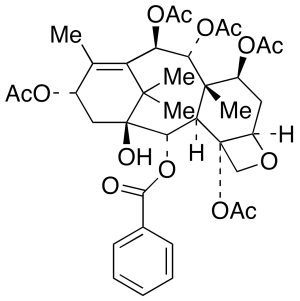
Baccatin VI
$253.58 Add to cart View Product DetailsMolecular Formula : C37 H46 O14
-

Baccatin VI
$1,976.85 Add to cart View Product DetailsMolecular Formula : C37 H46 O14
-

Bacitracin (>80%)
$78.49 Add to cart View Product DetailsMolecular Formula : C66 H103 N17 O16 S . 3 [C65 H101 N17 O16 S]
-

Bacitracin (>80%)
$91.43 Add to cart View Product DetailsMolecular Formula : C66 H103 N17 O16 S . 3 [C65 H101 N17 O16 S]
-

Bacitracin (>80%)
$154.39 Add to cart View Product DetailsMolecular Formula : C66 H103 N17 O16 S . 3 [C65 H101 N17 O16 S]
-
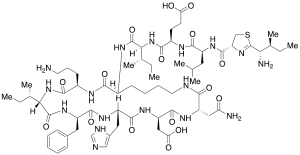
Bacitracin A
$411.41 Add to cart View Product DetailsMolecular Formula : C66H103N17O16S
-

Bacitracin A (Technical Grade)
$62.10 Add to cart View Product DetailsMolecular Formula : C66H103N17O16S
-

Bacitracin A (Technical Grade)
$108.68 Add to cart View Product DetailsMolecular Formula : C66H103N17O16S
-
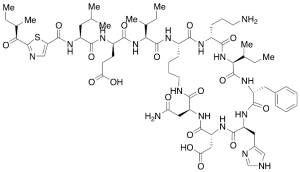
Bacitracin F (~75%)
$181.13 Add to cart View Product DetailsMolecular Formula : C66 H98 N16 O17 S
-

Bacitracin F (~75%)
$803.85 Add to cart View Product DetailsMolecular Formula : C66 H98 N16 O17 S
-

Bacitracin F (~75%)
$3,576.79 Add to cart View Product DetailsMolecular Formula : C66 H98 N16 O17 S
-

Bacitracin Zinc (>80%)
$87.11 Add to cart View Product DetailsMolecular Formula : C65 H99 N17 O16 S . Zn
-

Bacitracin Zinc (>80%)
$151.80 Add to cart View Product DetailsMolecular Formula : C65 H99 N17 O16 S . Zn
-

Bacitracin Zinc (>80%)
$232.88 Add to cart View Product DetailsMolecular Formula : C65 H99 N17 O16 S . Zn
-
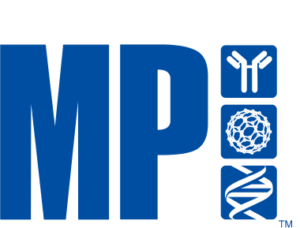
BACK PANEL FOR TEMPLATE-TAMER
$138.17 Add to cart View Product DetailsBACK PANEL FOR TEMPLATE-TAMER
-
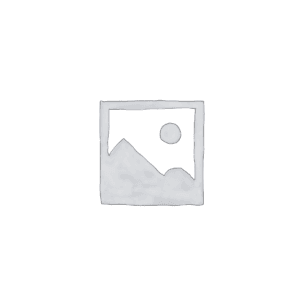
Baclofen
$50.89 Add to cart View Product DetailsMolecular Formula : C10 H12 Cl N O2
-

Baclofen
$81.08 Add to cart View Product DetailsMolecular Formula : C10 H12 Cl N O2
-

Baclofen
$144.04 Add to cart View Product DetailsMolecular Formula : C10 H12 Cl N O2
-
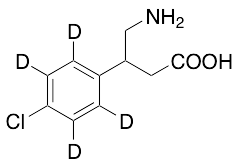
Baclofen-d4
$332.93 Add to cart View Product DetailsMolecular Formula : C10 2H4 H8 Cl N O2
-

Baclofen-d4
$2,645.29 Add to cart View Product DetailsMolecular Formula : C10 2H4 H8 Cl N O2
-
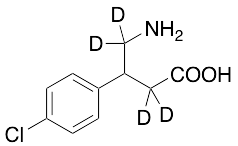
Baclofen-d4 (Major)
$176.81 Add to cart View Product DetailsMolecular Formula : C10 2H4 H8 Cl N O2
-

Baclofen-d4 (Major)
$1,389.49 Add to cart View Product DetailsMolecular Formula : C10 2H4 H8 Cl N O2
-
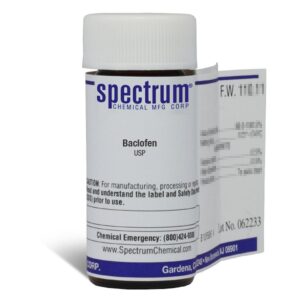
Baclofen, USP
$173.89 Add to cart View Product DetailsBaclofen, USP
-

Baclofen, USP
$485.58 Add to cart View Product DetailsBaclofen, USP
-
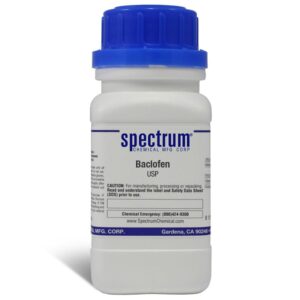
Baclofen, USP
$1,669.23 Add to cart View Product DetailsBaclofen, USP
-
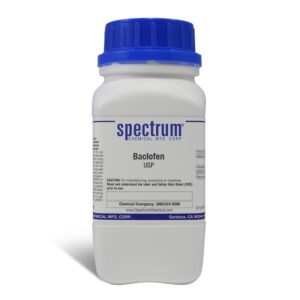
Baclofen, USP
$2,659.24 Add to cart View Product DetailsBaclofen, USP
-
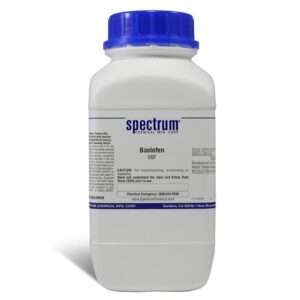
Baclofen, USP
$7,284.03 Add to cart View Product DetailsBaclofen, USP
-
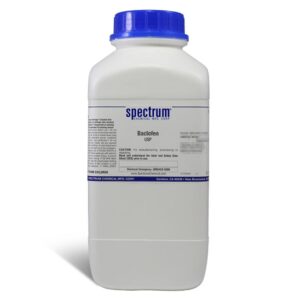
Baclofen, USP
$9,434.03 Add to cart View Product DetailsBaclofen, USP
-

Baeocystin
$293.25 Add to cart View Product DetailsMolecular Formula : C11 H15 N2 O4 P
-

Baeocystin
$1,333.43 Add to cart View Product DetailsMolecular Formula : C11 H15 N2 O4 P
-

Baeocystin
$2,201.96 Add to cart View Product DetailsMolecular Formula : C11 H15 N2 O4 P
-
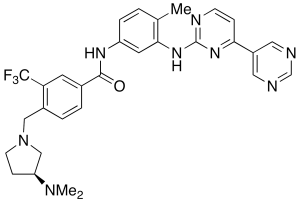
Bafetinib
$100.91 Add to cart View Product DetailsMolecular Formula : C30 H31 F3 N8 O
-

Bafetinib
$169.05 Add to cart View Product DetailsMolecular Formula : C30 H31 F3 N8 O
-

BAFF-R, Human
$1,086.75 Add to cart View Product DetailsBAFF Receptor (BAFF-R), a member of the TNFR superfamily, is highly expressed in spleen, lymph node, and resting B cells and to some extent in activated B cells, resting CD4+ cells and peripheral blood leukocytes. BAFF-R is a type III transmembrane protein that binds with high specificity to BAFF (TNFSF13B). BAFF-R/BAFF signaling plays a critical role in B cell survival and maturation.
-

BAFF-R, Human
$163.88 Add to cart View Product DetailsBAFF Receptor (BAFF-R), a member of the TNFR superfamily, is highly expressed in spleen, lymph node, and resting B cells and to some extent in activated B cells, resting CD4+ cells and peripheral blood leukocytes. BAFF-R is a type III transmembrane protein that binds with high specificity to BAFF (TNFSF13B). BAFF-R/BAFF signaling plays a critical role in B cell survival and maturation.
-

BAFF, Human
$1,651.69 Add to cart View Product DetailsB-cell activating factor, also known as BAFF, TALL-1, TNAK, and zTNF4, is a member of theTNF ligand superfamily designated TNFSF13B. Produced by macrophages, dendritic cells, and T lymphocytes, BAFF promotes the survival of B cells and is essential for B cell maturation. BAFF binds to three TNF receptor superfamily members: B-cell maturation antigen (BCMA/TNFRSF17), transmembrane activator and calcium-modulator and cyclophilin ligand interactor (TACI/TNFRSF13B) and BAFF receptor (BAFF R/BR3/TNFRSF 13C). These receptors are type III transmembrane proteins lacking a signal peptide. Whereas TACI and BCMA bind BAFF and another TNF superfamily ligand, APRIL(a proliferation-inducing ligand), BAFF R selectively binds BAFF. The BAFF R extracellular domain lacks the TNF receptor canonical cysteine-rich domain (CRD) and contains only a partial CRD with four cysteine residues. Human and mouse BAFF R share 56% aa sequence identity. BAFF R is highly expressed in spleen, lymph node and resting B cells. It is also expressed at lower levels in activated B cell, resting CD4+ T cells, thymus and peripheral blood leukocytes.
-

BAFF, Human
$51.75 Add to cart View Product DetailsB-cell activating factor, also known as BAFF, TALL-1, TNAK, and zTNF4, is a member of theTNF ligand superfamily designated TNFSF13B. Produced by macrophages, dendritic cells, and T lymphocytes, BAFF promotes the survival of B cells and is essential for B cell maturation. BAFF binds to three TNF receptor superfamily members: B-cell maturation antigen (BCMA/TNFRSF17), transmembrane activator and calcium-modulator and cyclophilin ligand interactor (TACI/TNFRSF13B) and BAFF receptor (BAFF R/BR3/TNFRSF 13C). These receptors are type III transmembrane proteins lacking a signal peptide. Whereas TACI and BCMA bind BAFF and another TNF superfamily ligand, APRIL(a proliferation-inducing ligand), BAFF R selectively binds BAFF. The BAFF R extracellular domain lacks the TNF receptor canonical cysteine-rich domain (CRD) and contains only a partial CRD with four cysteine residues. Human and mouse BAFF R share 56% aa sequence identity. BAFF R is highly expressed in spleen, lymph node and resting B cells. It is also expressed at lower levels in activated B cell, resting CD4+ T cells, thymus and peripheral blood leukocytes.
-

BAFF, Human
$194.06 Add to cart View Product DetailsB-cell activating factor, also known as BAFF, TALL-1, TNAK, and zTNF4, is a member of theTNF ligand superfamily designated TNFSF13B. Produced by macrophages, dendritic cells, and T lymphocytes, BAFF promotes the survival of B cells and is essential for B cell maturation. BAFF binds to three TNF receptor superfamily members: B-cell maturation antigen (BCMA/TNFRSF17), transmembrane activator and calcium-modulator and cyclophilin ligand interactor (TACI/TNFRSF13B) and BAFF receptor (BAFF R/BR3/TNFRSF 13C). These receptors are type III transmembrane proteins lacking a signal peptide. Whereas TACI and BCMA bind BAFF and another TNF superfamily ligand, APRIL(a proliferation-inducing ligand), BAFF R selectively binds BAFF. The BAFF R extracellular domain lacks the TNF receptor canonical cysteine-rich domain (CRD) and contains only a partial CRD with four cysteine residues. Human and mouse BAFF R share 56% aa sequence identity. BAFF R is highly expressed in spleen, lymph node and resting B cells. It is also expressed at lower levels in activated B cell, resting CD4+ T cells, thymus and peripheral blood leukocytes.
-
Bafilomycin A1
$299.29 Add to cart View Product DetailsMolecular Formula : C35H58O9
-
Bafilomycin A1
$1,298.06 Add to cart View Product DetailsMolecular Formula : C35H58O9


